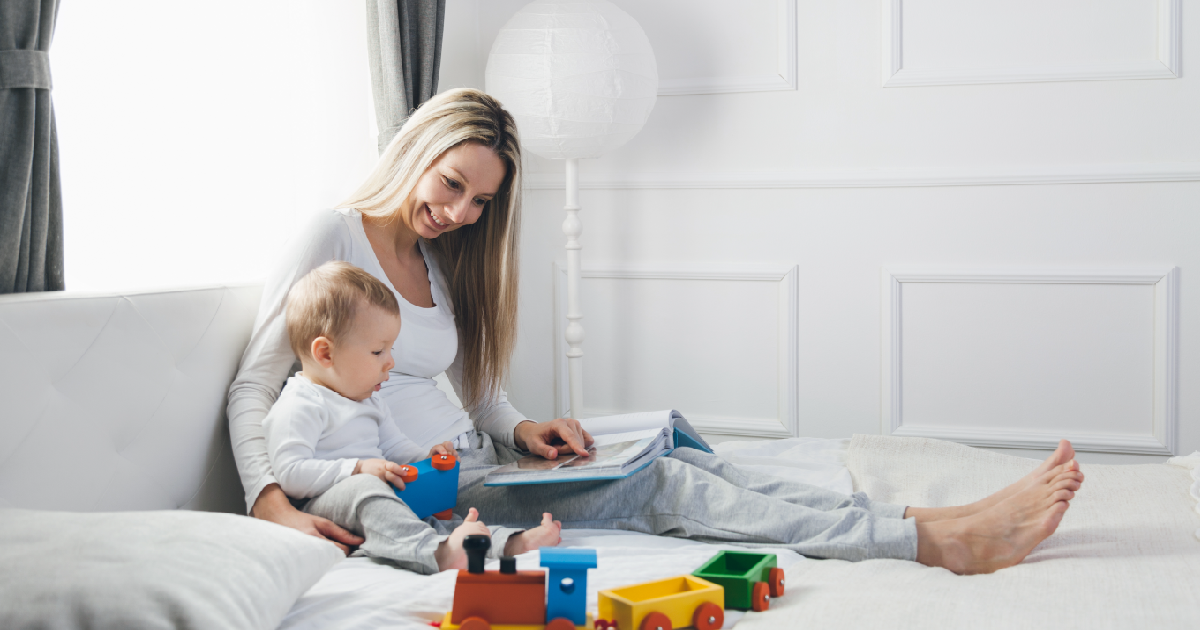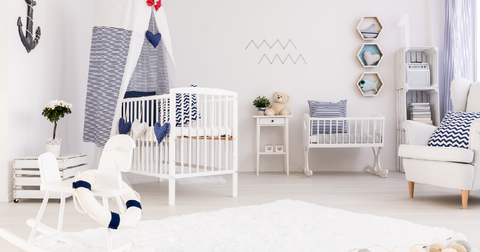
baby sleep solutions that deserve a spot on your registry
A better night’s sleep starts with these top picks.
People say, "sleep when your baby sleeps," but, real talk: most babies don’t actually sleep through the night until around six months. It’s no wonder sleep deprivation is one of the top frustrations for new parents. While we can’t actually teach your baby to sleep, we can help you clock just a few more zzz’s.
make room-sharing a little dreamier
Your baby should sleep in your room for the first six months, according to the American Association of Pediatrics, so a bedside bassinet or co-sleeper is a must. Room sharing, but not bed-sharing, helps reduce the risk of SIDS—and baby’s close proximity means they’re just an arm’s length away for late-night feeds.
Consider a smart bassinet. Many offer different motions and speeds, a built-in sound machine, and can be controlled with your phone. Game changer.
Make sure you have all the overnight essentials prepped before you head to bed: diapers, wipes, and burp cloths for the inevitable late-night feeds and changes. The more you have ready to go at baby’s first cry, the faster you can get the job done and get back to sleep.
Since your baby may spend more time in a wet diaper during the overnight hours, protect their bottom with diaper rash ointment before you put them down
set the scene for sleep
Once you move your baby into their own nursery, make sure it’s prepped to be the ultimate sleepy time oasis. Start with the crib mattress (organic, breathable, even vibrating), then add a waterproof mattress cover for an extra layer of leak protection. A crib sheet completes your bedding set; the AAP says nothing else should go inside baby’s crib until at least age two.
A baby monitor will give you extra peace of mind, while a wearable monitor can actually track their sleep and more. Check the range on your monitors to make sure it works from all the important places in your house.
Round out the nursery with a rocker or glider, and a changing station with a dim nightlight, so you can quickly and easily feed your baby, change them, and put them right back to bed.
create a relaxing routine
Incorporate sleep cues into their nighttime routine, including feeding, reading, and wrapping them in a swaddle (up until they can roll over) or a sleep sack (which the AAP recommends instead of a blanket, until age two).
Keep the overnight environment consistent; sudden changes can startle and wake your baby. A sound machine can dampen exterior noise and a humidifier will prevent the air from getting too dry. Humidifiers are so helpful when your baby’s sick.
Kickstart your little one’s circadian rhythm by keeping nighttime as dark as possible with blackout curtains.
The AAP says pacifiers are totally safe for sleep, and, in fact, can help prevent SIDS by keeping your baby’s airway clear. If your baby finds a pacifier soothing, let them suck away.
staying rested on the road
Sleeping while traveling is challenging for everyone, your baby included. You can make it easier by bringing familiar items from home like baby’s favorite book and sleep sack, and sticking as close to their usual bedtime routine as possible.
A foldable, portable crib will help your baby feel cozy while they’re away from home and can even be used for safe play during the day. Don’t forget to wash the sheets ahead of your trip so they’ll smell just like home.
When nothing works and you’re desperate for your baby to catch some zzz’s, strap them into a baby carrier and take a walk. The combination of movement and body warmth can help lull your baby to sleep.
